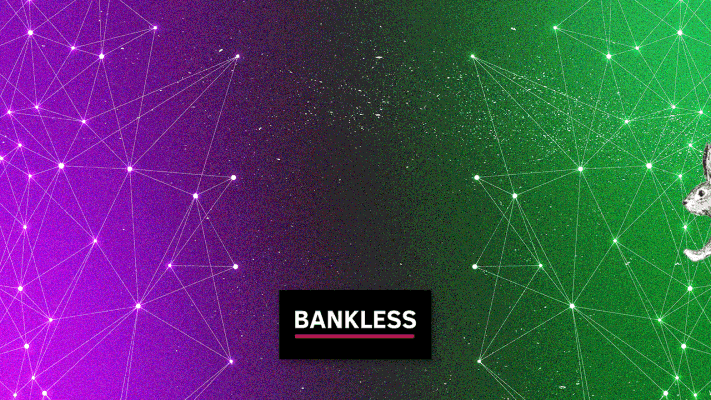Dear Bankless Nation,
NFTX, Universe, Shoyu, Showtime, OpenDAO, now LooksRare.
There’s a growing wave of NFT marketplaces that are coming for OpenSea’s lunch, or rather market share. And frankly since things are so early in the NFT ecosystem this wave is likely only just beginning.
That said, I’m guessing many more markets will be arriving over the next few years, and that prediction got me musing this week about what I personally reckon an ideal NFT marketplace would look like.
Accordingly, in this post I argue for 12 “pillars” that if taken altogether can serve as a great foundation for a next-gen NFT marketplace. And at the end if you think I’ve missed anything big do sound off in the comments below, I want to know!
-WMP
1) The foundation = an open-source protocol
In the spirit of openness so that anyone can use, fork, or build around the market, its foundation should be an open-source protocol. Examples of such protocols today include Zora and Rarible Protocol. This structure could lead to multiple community front-ends, too.
2) Use an open-source NFT API indexer
NFT indexers are crucial for providing access to NFT data on the fly. Yet private company NFT indexers are subject to private companies’ pitfalls. My ideal market would make use of an open-source NFT API like the ones Muse DAO and Rarible Protocol are working on right now.
3) Creator-owned storefronts
De-emphasize minting to shared contracts in favor of users deploying their own storefronts underpinned by smart contracts that they themselves totally control. Manifold Studio and Zora’s DIY auction house system are inspirations here.

4) Support for cross-platform royalties
I know supporting on-chain NFT royalties across every nook and cranny of the cryptoeconomy comes up against certain difficulties, at least in these early days. Yet I would love to see my hypothetical marketplace focus on supporting on-chain royalties to the fullest extent possible. Services like Manifold’s royaltyregistry.xyz can be a big help here.
5) Support for batch buys, sells, listings, and bids
Early NFT platforms have encumbered users with a general “one at a time” market style. It’s safe to say many collectors and NFT traders these days want the ability to do maneuvers en masse, so these features would be great. Here, leaning on market aggregators like Genie and Gem or NFT liquidity protocols like NFTX could make sense.
6) Flexible NFT minting
The market should support “lazy minting,” i.e. letting creators put NFTs up for sale without having to pay transaction fees. This opens the way to people earning crypto without having any in the first place. For example, Rarible Protocol supports lazy minting of 1/1 ERC-721s and editioned ERC-1155 NFTs.
7) Flexible NFT data
It’d be awesome if this hypothetical market would let you mint NFTs and choose where you store their data, e.g. on Arweave, IPFS, Filecoin, or any combination thereof.
8) Support for multi-chain + L2
Give people options. The easiest way to do this out of the gate is to support minting/NFT markets on EVM-compatible chains, e.g. alt-L1s, L2s, and sidechains. A browser wallet like MetaMask combined with bridging protocols like Hop makes moving around these chains easy. Also, having fiat on-ramps to L2s through services like Ramp would be amazing. The idea would be to make it easy for users to affordably mint and market their NFTs where and how they want.

9) Have a trading zone
This would take place on a front-end level, of course, but it would be neat for this market to have an NFT trading hub. It’d be a barter zone, perhaps even forum-like, where people could offer and facilitate NFT trades. Under the hood you could use something like the Sudoswap protocol and Sudoswap’s new anti-phishing code system to make the trades happen.
10) Thoughtful decentralization
It’s still an open question how to best mitigate plutarchy when it comes to decentralizing projects to “community-owned” status. In other words, how do we ensure regular users stay meaningful and rewarded stakeholders and not just whales that were earliest to the punch? Projects that can come up with compelling answers here will absolutely be ones to watch.
11) Robust analytics dashboard
Leading NFT marketplaces today offer stats dashboards, but they’re often minimal with regard to what you can search through and thus leave much to be desired. A huge plus for a marketplace’s front-end would be to provide a dedicated stats hub that offers extensive search functionalities.
12) Optimized discoverability and curation features
Easier said than done, right, but having a front-end UI that makes it really simple to find cool new NFTs and projects would be a huge advantage. Also giving users the ability to extensively organize and curate their collections at the front-end level would be great, too.
13) Bonus: AI + DAO for anti-plagiarism
Hot take, maybe a specialized AI and a specialized DAO guild could work in tandem to address art plagiarism on this market’s predominant front-end. I say front-end here because minting to the underlying contracts would be permissionless, so choking theft at the UI level would be the most practical way. I myself have a lot of questions about how exactly this would work, but it would be interesting to see a DAO guild succeed where other NFT platforms have struggled so far!
Action steps
- What do you think, have any pillars you would add to this “ideal marketplace” list? If so let me know in the comments below, I’m interested to catalogue ideas!
- Read my previous write-up NFTs: Class of ‘22 if you missed it!
